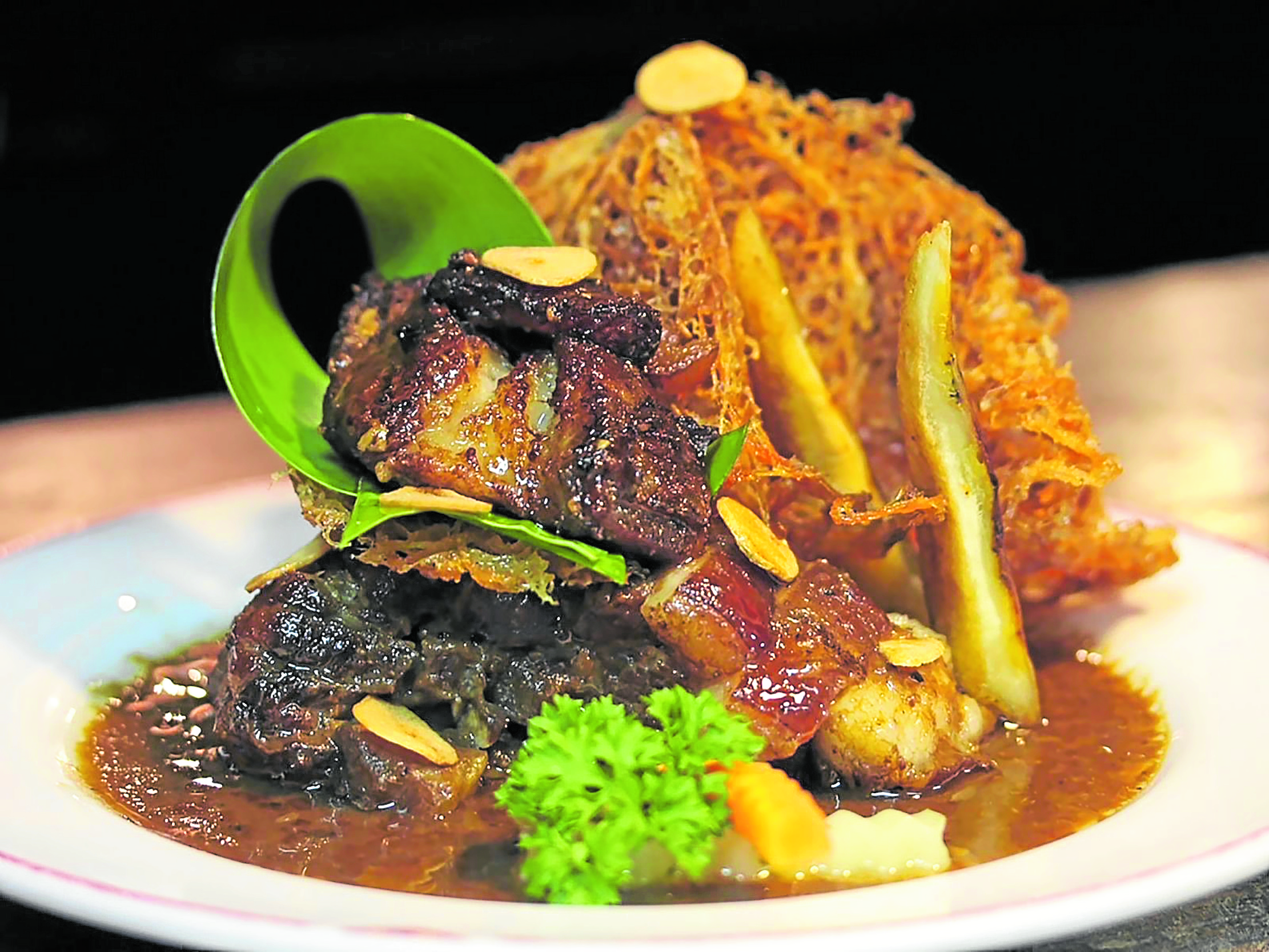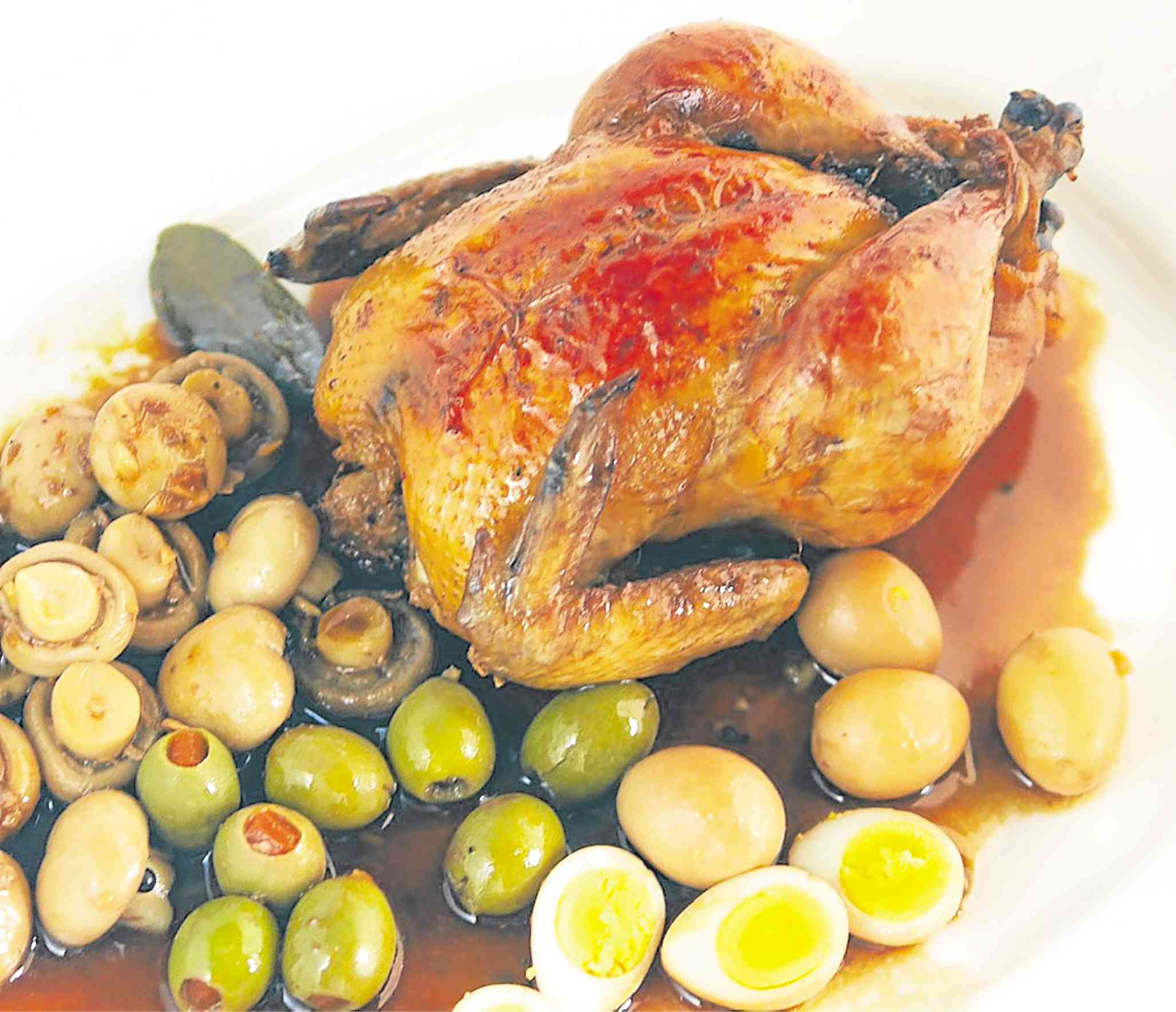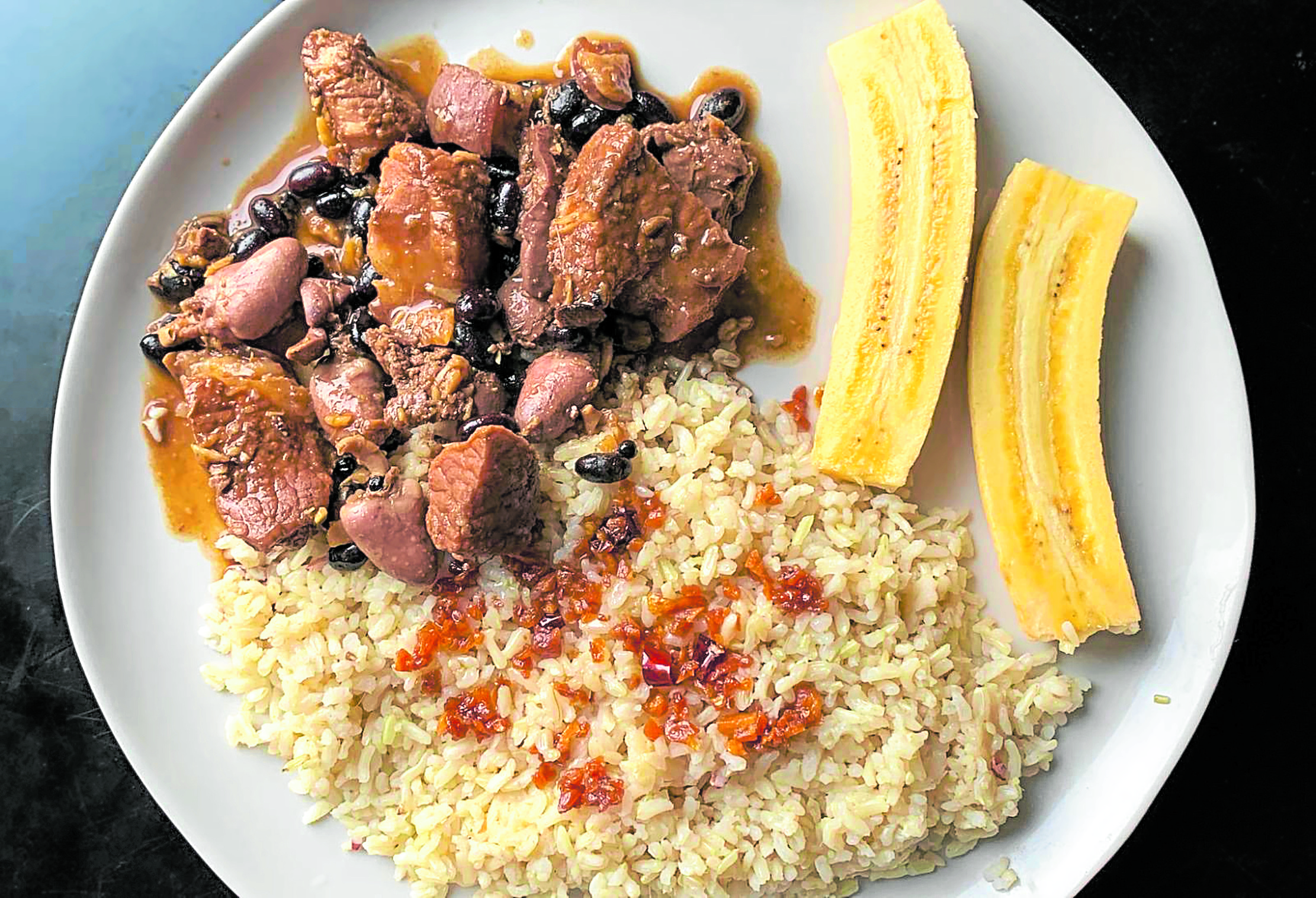
I am captivated by “The Ultimate Filipino Adobo Book.” How could I not be, when it is penned by Claude Tayag with Micky Fenix and Ige Ramos? The book is a treasure chest of information. Adobo has always fascinated me. How can a dish so simple spark such controversy?
So, what is adobo, and should it be our national dish?
Award-winning food writer Ige says that adobo doesn’t have the weight to be the national dish. Micky and Claude agree.
In fact, Claude writes lengthily on the subject. It is such a good read that I have to share some excerpts from the book with you:
“For the record, we have NO national dish.”
“Granting that our adobo could also mean a dish and not just a cooking technique, to make it officially the ‘national dish’ needs proclamation by law.”
“According to official documents, there are only 12 official national symbols, and believe you me, the mango, carabao, anahaw palm tree and Dr. Jose Rizal all do not belong to this exclusive inner-circle club.”
“Speaking of a national hero, historian Ambeth R. Ocampo wrote: ‘Most Filipinos generally agree that Jose Rizal is the national hero, but some people insist that it should be Andres Bonifacio …”
“To date, there is no law declaring Rizal as our national hero. Rizal has always been regarded as such by acclamation and tradition.”

“And, so it is with our adobo being called as our ‘national dish,’ erroneous as it may be—by acclamation and tradition.”
Claude explains that in the Filipino context, adobo is a cooking method with vinegar as its primary liquid source.
Our adobo is the braising of any meat or vegetable in vinegar, garlic, black peppercorn, with regional variations or personal preferences.
He adds, “It is this versatility that makes it the most popular and well-loved Filipino comfort food. The adobo is the great leveler—the cooking method and the cooked dish that crosses all economic boundaries.”
I am a staunch believer in using authentic ingredients to achieve authentic results. Thus, I agree with Claude when he says that if one is to capture the essential flavors of Filipino adobo, one must use local ingredients.
Thus the flavor of one’s adobo will largely depend on the type of vinegar used, and locally, there are plenty made out of sugarcane, coconut, nipa palm, arengga palm … the list goes on.
Add to that, whether one likes it dried, fried, saucy, with or without soy, depends largely on personal preference and where one is from.
All these make the much beloved dish a many-splendored thing.
I cannot agree more when Tayag says, “Adobong walang kwento, walang kwenta.”
Adobo is personal. Each rendition, has a tale to tell … each one unique—cooked as interpreted by its maker. This is why it’s special.
Ultimate adobo stories

Take, for example, the adobo flakes that was first introduced to the public by Via Mare’s Glenda Barretto in 1975. It was created with her father, who loves everything crispy, in mind. As the story goes, Tita Glenda fried some leftover shredded chicken adobo—and crispy adobo was born.
Another adobo of interest is the Cornish hen adobo by the late painter Anita Magsaysay-Ho. As a souring agent, cider vinegar is used. The dish is garnished with button mushrooms, quail eggs and green olives.
So, is this adobo, with foreign ingredients, Pinoy enough? one might ask. Claude quotes Doreen Fernandez who wrote: “Traditional ways are wonderful; but new ways, when applied with understanding, can create a dish anew—without betraying tradition.”
A more complex expression is done by Dr. Boy Vazquez of Cafe Juanita fame. He does his adobo three ways—slow-braised pork ribs, crispy adobo flakes and adobong Bisaya—cooked till dry, then left to fry till crisp in its own fat.

And there’s Angelo Comsti’s “salty” adobo, as his late father liked most of his food. It is cooked by putting 500 grams adobo cut pork and 150 grams chicken liver and heart in a pot. Water is added and left to simmer for two minutes, then drained. The meats are returned to the pan with ½ tbsp whole black peppercorns, 1 bulb peeled garlic, 1 bay leaf, ¾ cup soy sauce, ⅓ cup vinegar and 2 cups water. When meat is almost tender, add ¼ to ⅓ cup of tausi. Continue to cook until meat is tender. You may set the sauce aside and fry the meats. Then serve together when ready to eat.
Angelo’s adobo caught my attention because of the banana on the plate—which is how I love to eat my adobo.
In my house, our adobo story is all about Mom, who made hers without soy. The meats are simply browned, then garlic, vinegar, peppercorn and sea salt are added. No bay leaf for us—Dad didn’t like the taste of bay leaves. It’s had with ripe bananas or very sweet mangoes.
See, all of us, have an adobo story to tell. Whether you believe adobo to be our national dish or not, it cannot be denied, that our palates are enamored by it.
“The Ultimate Filipino Adobo Book” is available on Lazada and Shoppeewww.reggieaspiras.com; @iamreggieaspiras on Instagram and Facebook.








































